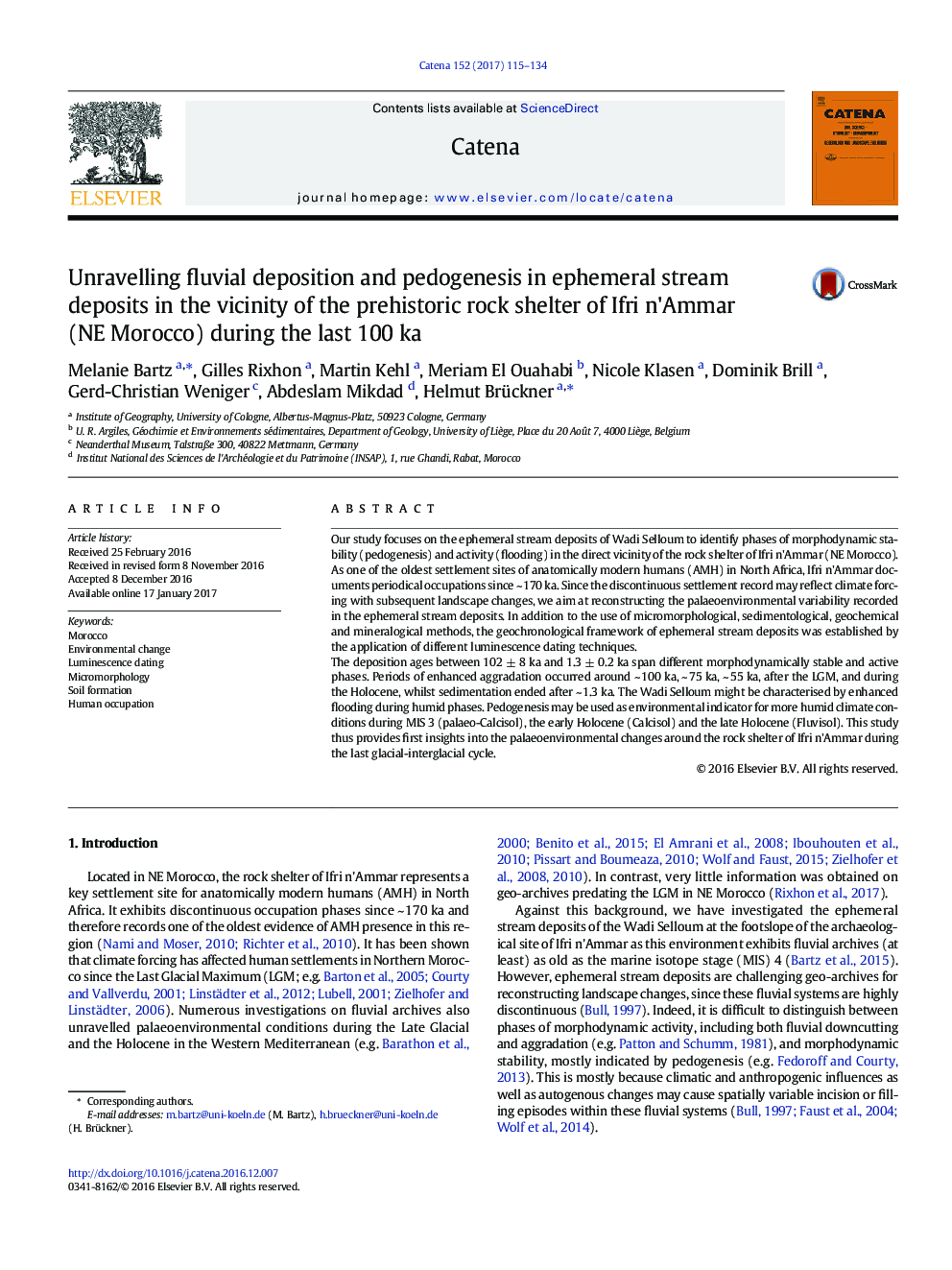| Article ID | Journal | Published Year | Pages | File Type |
|---|---|---|---|---|
| 5769953 | CATENA | 2017 | 20 Pages |
â¢Chronostratigraphies were established with luminescence dating techniques.â¢The Wadi Selloum reveals enhanced flooding during humid periods.â¢Pedogenesis during MIS 3, since early Holocene times and the late Holocene.
Our study focuses on the ephemeral stream deposits of Wadi Selloum to identify phases of morphodynamic stability (pedogenesis) and activity (flooding) in the direct vicinity of the rock shelter of Ifri n'Ammar (NE Morocco). As one of the oldest settlement sites of anatomically modern humans (AMH) in North Africa, Ifri n'Ammar documents periodical occupations since ~ 170 ka. Since the discontinuous settlement record may reflect climate forcing with subsequent landscape changes, we aim at reconstructing the palaeoenvironmental variability recorded in the ephemeral stream deposits. In addition to the use of micromorphological, sedimentological, geochemical and mineralogical methods, the geochronological framework of ephemeral stream deposits was established by the application of different luminescence dating techniques.The deposition ages between 102 ± 8 ka and 1.3 ± 0.2 ka span different morphodynamically stable and active phases. Periods of enhanced aggradation occurred around ~ 100 ka, ~ 75 ka, ~ 55 ka, after the LGM, and during the Holocene, whilst sedimentation ended after ~ 1.3 ka. The Wadi Selloum might be characterised by enhanced flooding during humid phases. Pedogenesis may be used as environmental indicator for more humid climate conditions during MIS 3 (palaeo-Calcisol), the early Holocene (Calcisol) and the late Holocene (Fluvisol). This study thus provides first insights into the palaeoenvironmental changes around the rock shelter of Ifri n'Ammar during the last glacial-interglacial cycle.
